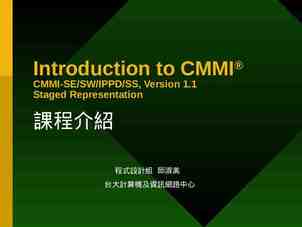CHAPTER SIX: Healthcare Killers 2016 Cengage Learning. All Rights
22 Slides1.90 MB

CHAPTER SIX: Healthcare Killers 2016 Cengage Learning. All Rights

To understand the role of healthcare providers in committing serial murder To explore serial murder in the healthcare industry from a global perspective To examine the types of offenders in the healthcare professions who use their occupations to access and murder victims To explore gender within healthcare as a factor in offending and victim selection To examine cases of healthcare-related serial murder and factors facilitating those deaths 2016 Cengage Learning. All Rights Reserved.

Serial murder occur in nursing homes and hospitals because: Victims are accessible and vulnerable. An offender can easily operate without detection because no one expects such crimes to occur in a place of care. An offender has access to a variety of murder weapons that are easily disposed of without detection. Often autopsies are not performed when a death occurs under the care of an attending physician. 2016 Cengage Learning. All Rights

Compared to cases of non-healthcare serial murder, those healthcare providers who engage in murdering patients are quite rare but often very prolific in their killing. See the Dr. Harold Shipman profile 2016 Cengage Learning. All Rights

In the U.S., over 70% of murders occur in hospital settings. Number of Cases Investigated in the U.S. 1970’s--2 1980’s--12 1990’s--11 2000-2009—20 2016 Cengage Learning. All Rights

N 41 2016 Cengage Learning. All Rights Reserved.

They found 86% of their cases involved nursing personnel and that women were involved in 55% of the cases prosecuted. The majority of murders occurred in hospital settings and victims were most likely to be critically ill, very young, very old, or with apparent vulnerabilities. Injections were the most common way to kill, but it was not uncommon for multiple methods to be employed. 2016 Cengage Learning. All Rights

Between 2000 and 2001, Vickie Dawn Jackson, 36, a vocational nurse in Texas injected elderly patients at Nocona General Hospital with lethal doses of mivacurium chloride. At least 10 patients died and investigators believe that she was involved in several more deaths. Donald Harvey, a hospital orderly, killed at least 57 patients and stated that he killed them out of mercy to ease their suffering. 2016 Cengage Learning. All Rights

Lampe refers to these types of killers as experiencing The Mother Teresa Syndrome. These are persons often with narcissistic personalities, hero fantasies and need to control others. Needy people often make poor choices and in some cases such as caregivers, patients become proxies to assuage feelings of low self-esteem. The need to help becomes a compulsion that, in its extreme, is manifested in acts of murder. 2016 Cengage Learning. All Rights

Equip. tampering 1% Poisoning 1% Suffocation 11% Oral meds 3% Air embolus 3% Injections 52% Water in lungs 4% Unknown 25% See the Genene Jones profile 2016 Cengage Learning. All Rights Reserved.

In the U.S. licensed nurses who used injections administered medications such as insulin, epinephrine, or potassium chloride into intravenous lines. Nurses in Europe were more likely to use morphine. Nurse’s aides were more likely to suffocate, use poisons, or administer oral medications. Healthcare providers who kill their patients are often diagnosed with Munchausen syndrome. 2016 Cengage Learning. All Rights

DIGOXIN: a powerful heart medication used primarily to improve the pumping ability of the heart in cases of congestive heart failure. It is also used to help normalize some dysrhythmias (abnormal types of heartbeat). ADRENALINE: a hormone produced by the adrenal medulla, with the purpose of releasing neurotransmitters into the bloodstream to increase heart activity and increase the rate and depth of breathing. SUCCINYLCHOLINE: a neuromuscular paralytic agent, it is relatively undetectable. Used as an anesthetic to relax muscles during surgery. POTASSIUM CHLORIDE: Cardiac dysrhythmias and arrest are the likely cause of death following potassium FENTANYL: “The perfect poison”, overdose. It is a prescription is 80 times more powerful than drug used to replace morphine and is odorless and potassium in persons with low tasteless. Google search Kristin blood levels of potassium, to Rossum. prevent potassium depletion Cengage Learning. All Rights in specific diseases or 2016 Reserved.

Warfarin 2% Flunitrazepam 2% Epinephrine 4% Unknown Etiology 7% Opiates & Opiods 23% Lidocaine 6% Digoxin 4% Succinyl choline 6% KCI 17% Oral meds 3% Other Neuromuscular blocking drugs 9% Water in lungs 4% See the Kristen Gilbert and Terri Rachals profiles 2016 Cengage Learning. All Rights

Several offenders had injected themselves to draw attention or gave falsified reports of being sexually assaulted or threats of bodily harm to themselves prior to murdering their patients. Others, the survey revealed, were sadistic and enjoyed the power over life and death, while a few financially profited from the murders. 2016 Cengage Learning. All Rights

Kimberly Saenz used bleach to inject and kill 6 dialysis patients in a Texas hospital. Several other patients were seriously injured. Saenz was convicted in 2012. Google her case. What was her motive? 2016 Cengage Learning. All Rights

Some see themselves as “Angels of Death” engaged in the mercy killing of terminally ill patients, persons who suffer. United States, Germany and England report the most cases of health care facilitated murders. See Efren Saldivar profile 2016 Cengage Learning. All Rights

How do professionals go from normal, civil life to the torture and destruction of children? See Dr. Heinrich Gross Profile (aka Dr. Vomit to many of his young patients.) Did the German government convince Dr. Gross that he was needed for such a cause, or was it already in his nature to do so? 2016 Cengage Learning. All Rights

The potential for scandal sometimes spurs supervisors to minimize reports that somebody is acting suspiciously or could be harming patients. Prosecuting those who are believed to be involved in the deaths of patients can be very difficult as a result of lost evidence, sensationalism, and legal procedures. See the Donald Harvey profile 2016 Cengage Learning. All Rights

Statistically, a patient’s risk of harm is significantly greater when treated by the subject The subject is uncommonly accurate in predicting patients’ demise Patient deaths were unexpected by staff or family, and the family was not at the patient’s bedside Death certificate cites the patient’s last illness as the cause of death, or a catch-all is noted, such as cardiac arrest Initial review usually finds insufficient evidence to pursue the case, with buyin from management The subject often continues patient care during investigation, and is removed only after allegations become public knowledge Fellow employees often report allegations to investigators, not management There are no eyewitness to the crime Witnesses say they saw the subject with the patient shortly before the patient died

The weapon of choice is usually a sudden death chemical readily available on the ward and often considered non-detectable or not checked at autopsy. Syringes, IV lines and feeding tubes are the most likely portals of entry if poison is used If a code is called, EKG strips should be in the chart; their absence should raise suspicions Subjects are often charming and friendly, yet have difficulty with personal relationships The subject receives good written reviews from supervisors Prior employment records show questionable incidents The subject is given nicknames by the staff while still employed Drugs, poisons and related books are found in the subject’s home Killing is non-confrontational The subject insists patients died of natural causes The subjects never show remorse for their victims Other patients complain about the subject but their comments often are ignored The subjects crave notoriety Evidence exists that the subject killed or attempted to kill off duty as well as on duty 2016 Cengage Learning. All Rights

You Don’t Know Jack Al Pacino, story of Jack Kevorkian. The Boys From Brazil Gregory Peck, story of Joseph Mengele. The Death Shift by Peter Elkind. Story of nurse Genene Jones. 2016 Cengage Learning. All Rights

Nursing Home Abuse News, www.elderly-abuse.com/wordpress/cate gory/states/ohio/page/2 /. The Guardian: Q&A: Harold Shipman, www.guardian.co.uk/society/2005/aug/2 5/health.shipman . BBC News: Nazi 'Euthanasia' Children Buried, news.bbc.co.uk/2/hi/europe/1942335.st m 2016 Cengage Learning. All Rights






